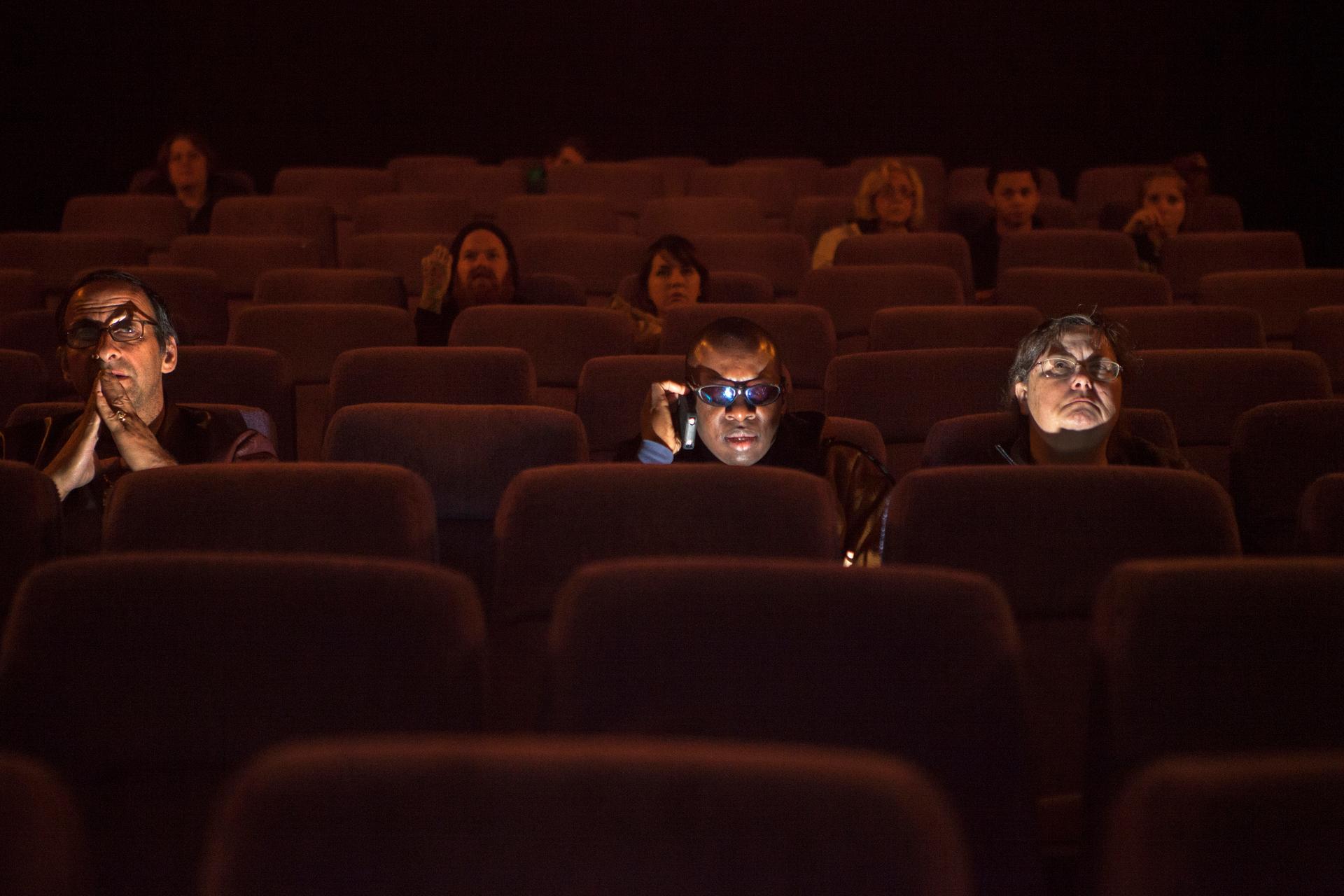Watching movies may help you build empathy
Students from the World Services for the Blind (WSB) sit to watch a movie inside a theater in Little Rock, Arkansas January 4, 2013.
There is a scene in Charlie Chaplin’s 1917 silent film "The Immigrant" when he kicks an immigration official at Ellis Island. Chaplin’s character, the Tramp, has just crossed the Atlantic Ocean on a ship full of European immigrants. Upon arrival to America, they are herded behind a barrier like cattle. Frustrated by the treatment, Chaplin gives the officer a quick kick in the pants.
Chaplin worried about the scene, and even asked his publicity director, Carlyle Robinson, if it was too shocking for audiences. It wasn’t. People loved it, and "The Immigrant" was a hit. The kick in the pants helped audiences empathize with the hardships of immigrant life and became a Chaplin staple.
oembed://https%3A//www.youtube.com/watch%3Fv%3DkEXjjogVM3E
But can something as simple as watching movies — and empathizing with fictional characters — help generate more compassion and understanding in the real world?
Roger Ebert thought so. “The purpose of civilization and growth is to be able to reach out and empathize a little bit with other people,” said Ebert in "Life Itself," a 2014 documentary about late film critic’s life and career. “And for me, the movies are like a machine that generates empathy. It lets you understand a little bit more about different hopes, aspirations, dreams and fears.”
Science supports Ebert’s theory. Dr. Jim Coan, associate professor of clinical psychology and director of the Virginia Affective Neuroscience Laboratory at the University of Virginia, says Ebert was right. We “immerse ourselves in the perspective of another person,” Coan said. “And in doing that, we start to subtly accrue those perspectives into our own universe … and that’s how empathy is generated.”
Many scientists have studied the link between storytelling and empathy. A study conducted by Paul Zak (a neuroeconomist who studies human decision-making) and William Casebeer (a nuerobiologist who studies how stories affect the human brain), showed that watching a compelling narrative can alter brain chemistry. When the study’s participants were shown a film about a father raising a son with terminal cancer, their brains responded by creating two neurochemicals: cortisol and oxytocin. Cortisol focuses attention by triggering a sense of distress, while oxytocin generates empathy by triggering our sense of care.
The more oxytocin gets released, the more empathy participants felt for the characters in a story. The study also found those who produced more cortisol and oxytocin while watching a movie were more likely to donate money to related charities afterward.
oembed://https%3A//www.youtube.com/watch%3Fv%3DDHeqQAKHh3M
It’s possible that participants of Zak and Casebeer’s study easily empathized with the film’s characters because they related to them in some way. Coan says feeling empathy for someone who seems familiar—like a friend, a fictional character, or even a public figure — is “almost effortless” for most people. It’s much harder to extend our empathy to those who seem very different from ourselves. But Coan also says empathy is like a muscle, and “the more you use it, the stronger it becomes.”
Another study, published in the Journal of Applied Social Psychology in 2014, found that watching movies and reading books can also generate empathy for people we perceive as very different from ourselves. After reading Harry Potter, participants of the study showed greater empathetic responses to people in LGBT communities, immigrants, and other definable “outgroups.” The researchers concluded that engaging with Harry Potter’s story—filled with characters working to overcome prejudices and searching for where to fit in — helped participants better understand other people’s perspectives.
And that understanding is essential to building a compassionate world. “We fundamentally need to have empathy, understanding, shared goals, and cooperation,” Coan said. When we lack that connection, “our sense of self literally, not metaphorically but literally, is diminished.” In other words, our identity is directly linked to our emphatic connections with others.
Almost 100 years ago, Chaplin helped audiences empathize with European families immigrating to the US. Today, we face our own set of social and political issues, with immigration still among them. In a world that still so desperately needs more tolerance, understanding, and empathy, a movie night might just be the first step in getting there.
This story was originally published by YES! Magazine, a nonprofit publication that supports people’s active engagement in solving today’s social, political, and environmental challenges.
The World is an independent newsroom. We’re not funded by billionaires; instead, we rely on readers and listeners like you. As a listener, you’re a crucial part of our team and our global community. Your support is vital to running our nonprofit newsroom, and we can’t do this work without you. Will you support The World with a gift today? Donations made between now and Dec. 31 will be matched 1:1. Thanks for investing in our work!
